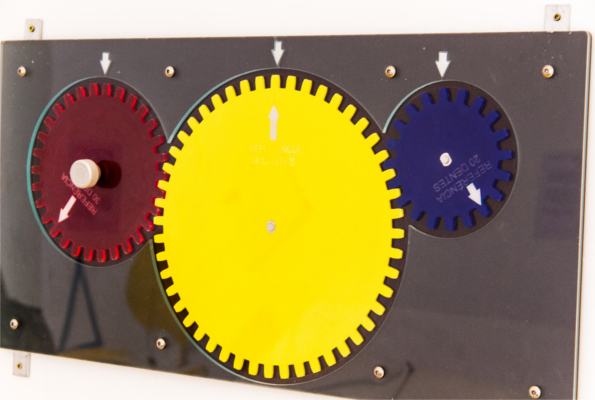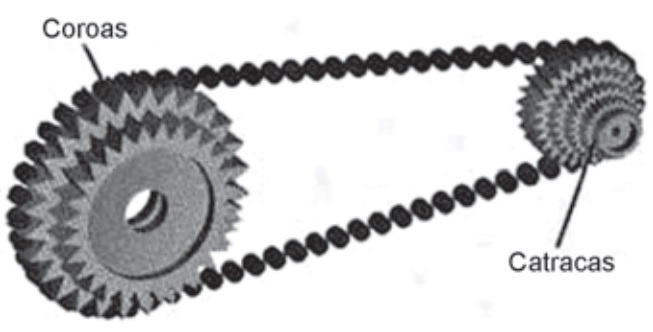GEARS
Start the movement with all arrows vertical and pointing up. Start spinning by looking at the blue gear. How many turns of the blue wheel does it take for the mechanism to return to the starting position?

You can answer the challenge by simply counting the turns of the blue gear. But he could also predict the outcome without even putting his hand on the apparatus.
What matters here is the number of teeth on the gears. The arrow on the blue wheel returns to its initial position when this wheel makes one revolution, that is, when 20 gear teeth have passed. Again the arrow returns to the starting position when 40 teeth, 60 teeth, etc. have passed. Something similar happens with the other wheels.
Conclusion: all arrows will be back in the starting position when the number of teeth that pass through is a multiple of 20, 30 and 48 at the same time. The first time it occurs it is the least common multiple (LCM) of the three numbers. So, how many turns does the blue wheel make for the mechanism to return to its initial position?

The sprocket principle is used on bicycles, so the number of pedal strokes need not be exactly equal to the number of turns of the wheel.
If you want to see a little more about this mechanism, check out the video below! Enjoy and check out the other cool videos on Matemateca's channel on YouTube!
